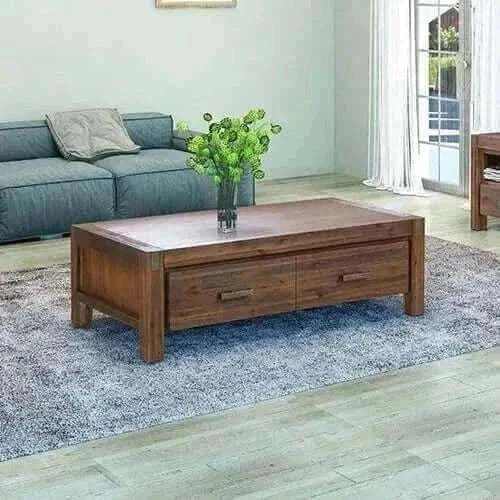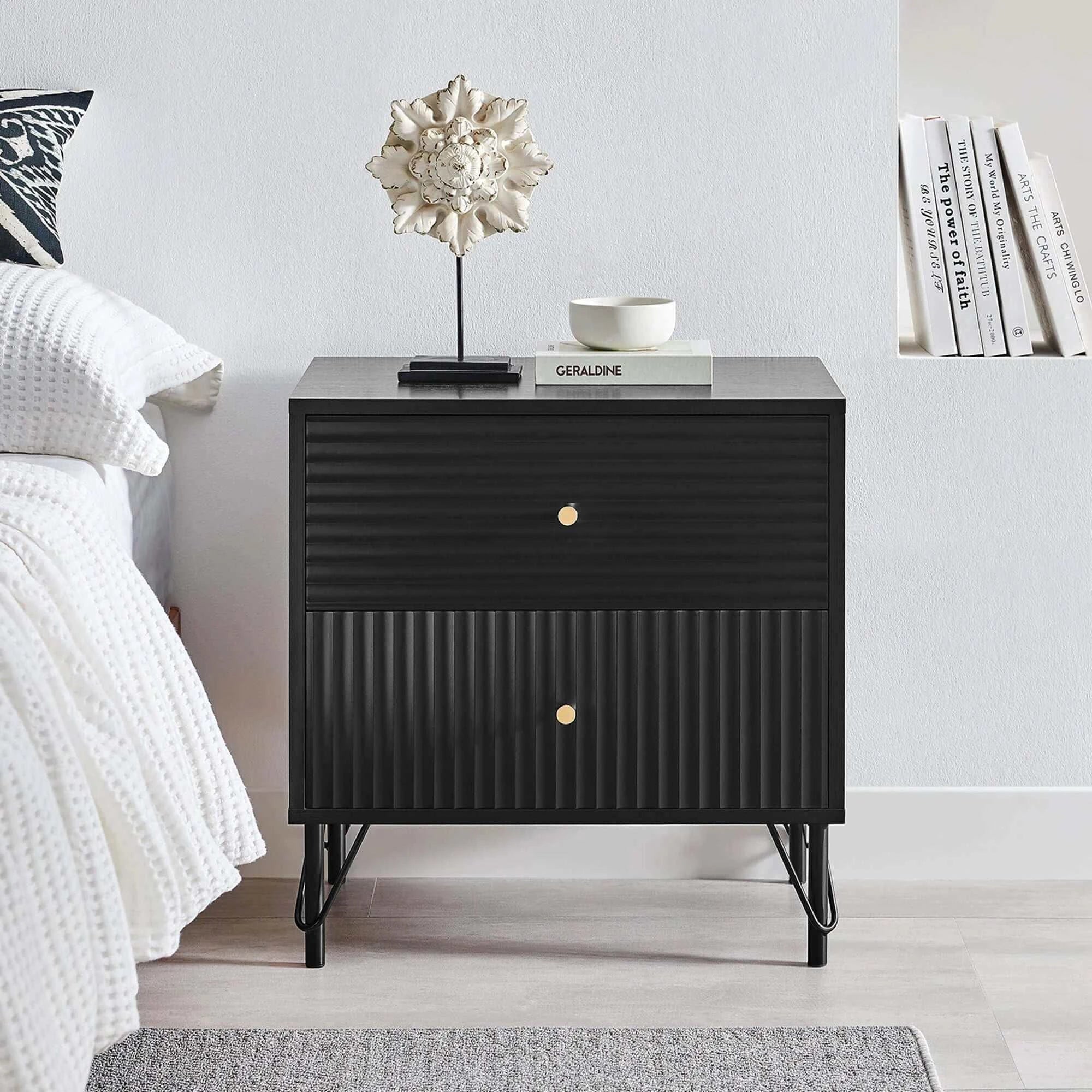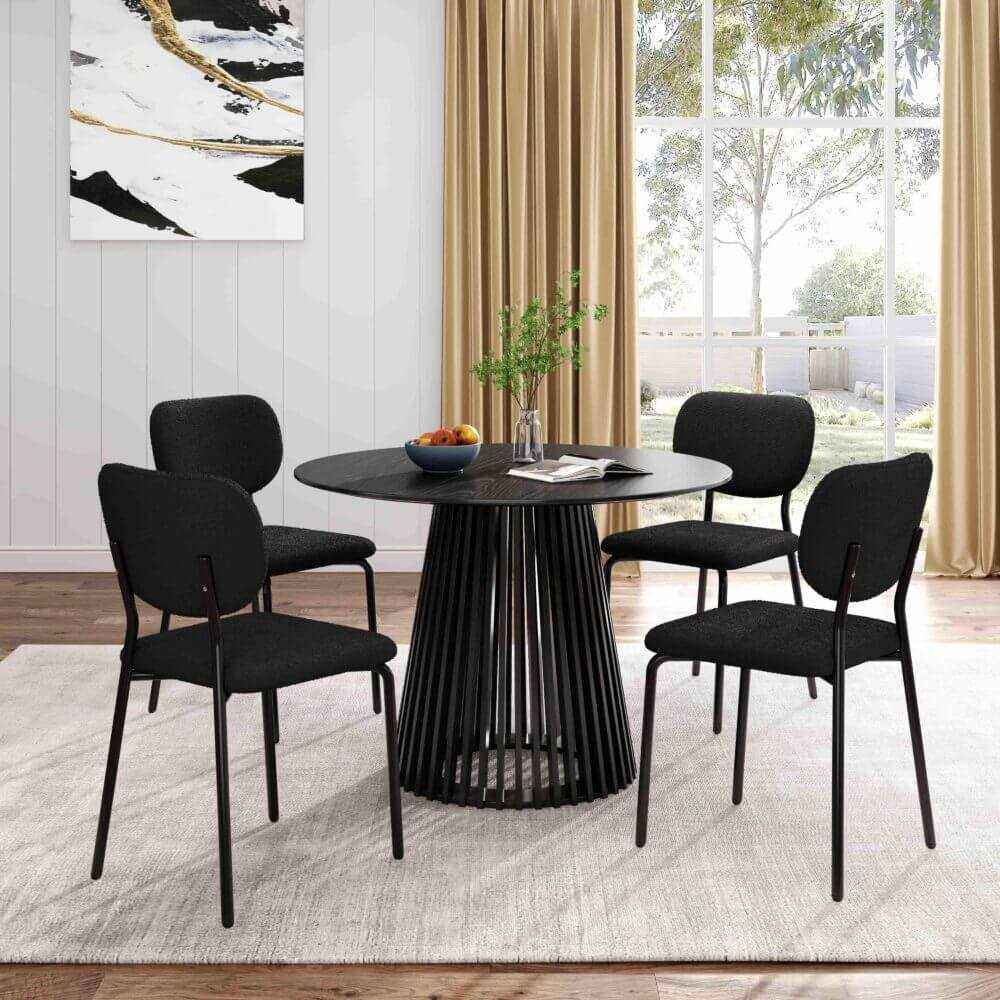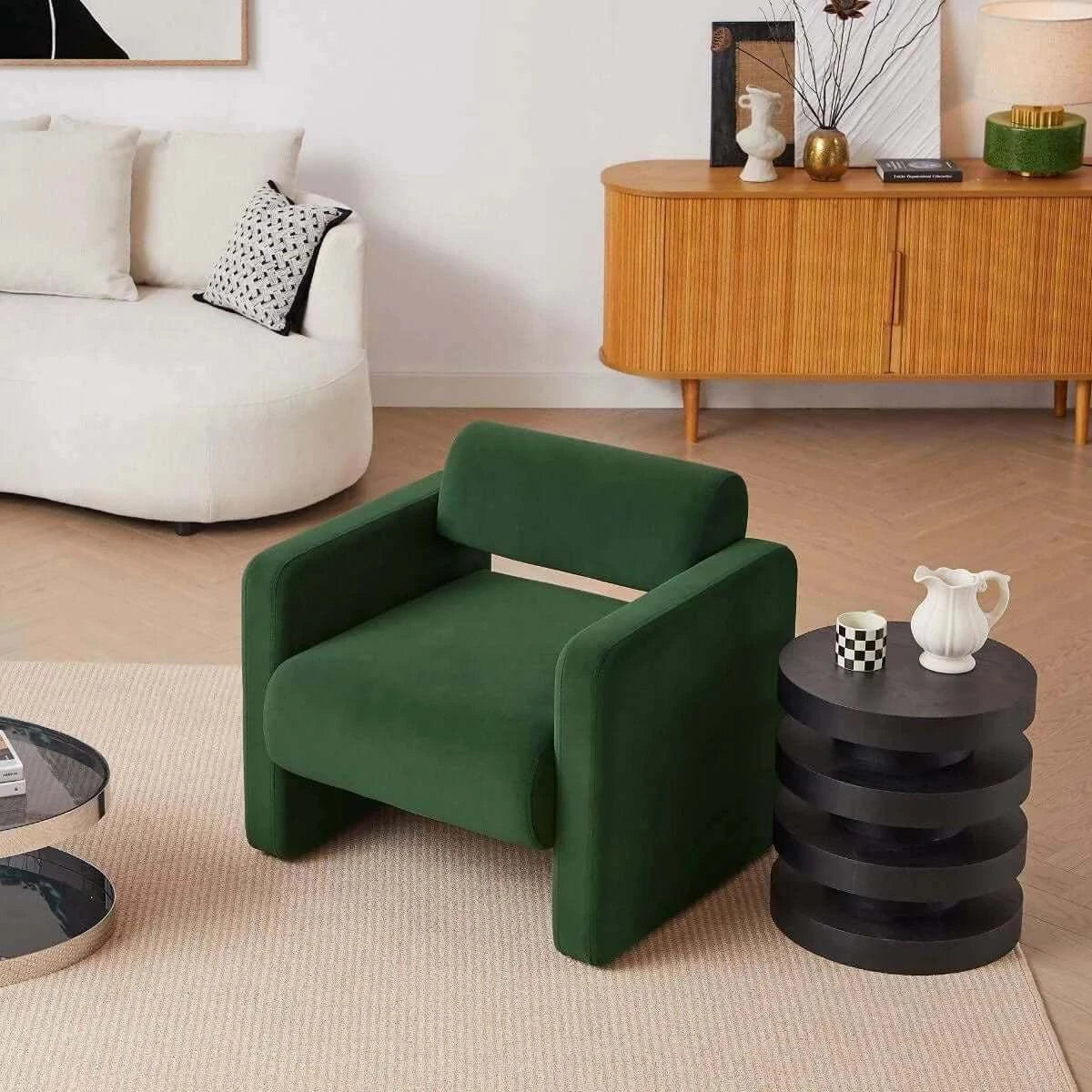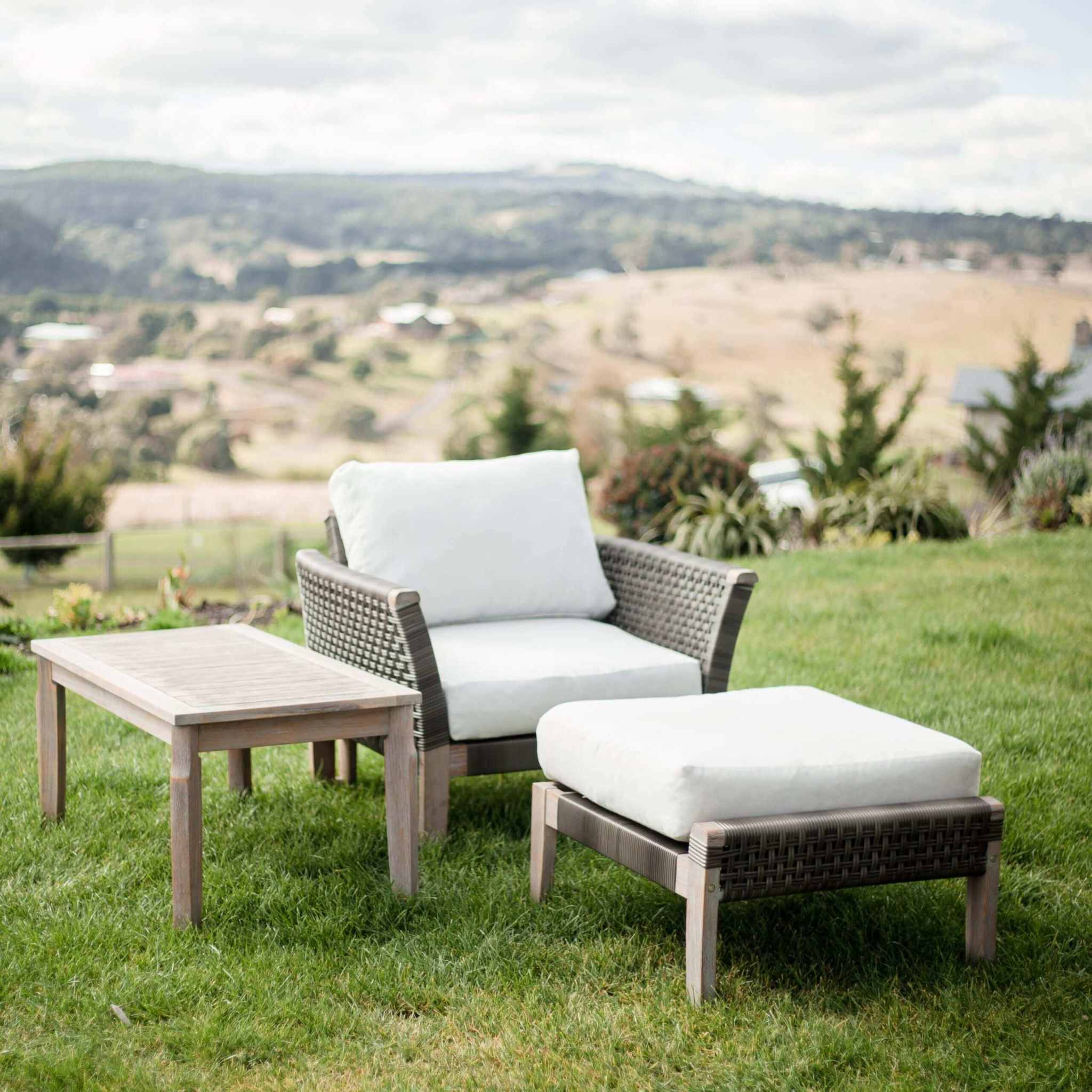When you walk into a beautifully designed living room, your eyes naturally gravitate toward the coffee table. This central piece of furniture serves as both a functional surface and a design statement, transforming your entire space. Timber coffee tables have emerged as the preferred choice for homeowners who value natural beauty, exceptional craftsmanship, and long-lasting quality.
Unlike mass-produced alternatives, timber coffee tables offer something truly special – each piece tells its own story through unique grain patterns, natural characteristics, and the inherent beauty of real wood. Whether you're furnishing your first home or upgrading your existing space, understanding the world of timber coffee tables will help you make an informed investment that will serve your family for generations.
In this comprehensive guide, we'll explore everything you need to know about timber coffee tables, from selecting the right wood species to caring for your investment. You'll discover how to choose the perfect size and style for your space, understand the differences between various timber options, and learn where to find quality pieces that match your vision and budget.
What Are Timber Coffee Tables and Why Choose Them?
A timber coffee table is more than just a surface to place your coffee cup – it's a carefully crafted piece of furniture that serves as the centrepiece of your living room. These tables are constructed primarily from natural wood, emphasising solid, sustainable materials rather than engineered alternatives such as particleboard or laminate.
Definition of timber coffee tables and their role as living room centrepieces
Timber coffee tables serve as the social hub of your living space, strategically placed in front of your sofa to facilitate conversation, display decorative items, and provide a convenient surface for daily activities. The term "timber" refers explicitly to wood prepared for construction and furniture-making, often highlighting the use of solid, natural materials that showcase the wood's authentic character.
Natural beauty and grain patterns are unique to each piece.
One of the most compelling reasons to choose timber coffee tables lies in their individuality. Each wooden coffee table displays distinct grain patterns, colour variations, and natural markings, making it absolutely unique. The organic beauty of timber creates visual interest and warmth that synthetic materials cannot replicate. From the dramatic swirls of walnut to the distinctive ray patterns of oak, every timber species brings its own aesthetic personality to your home.
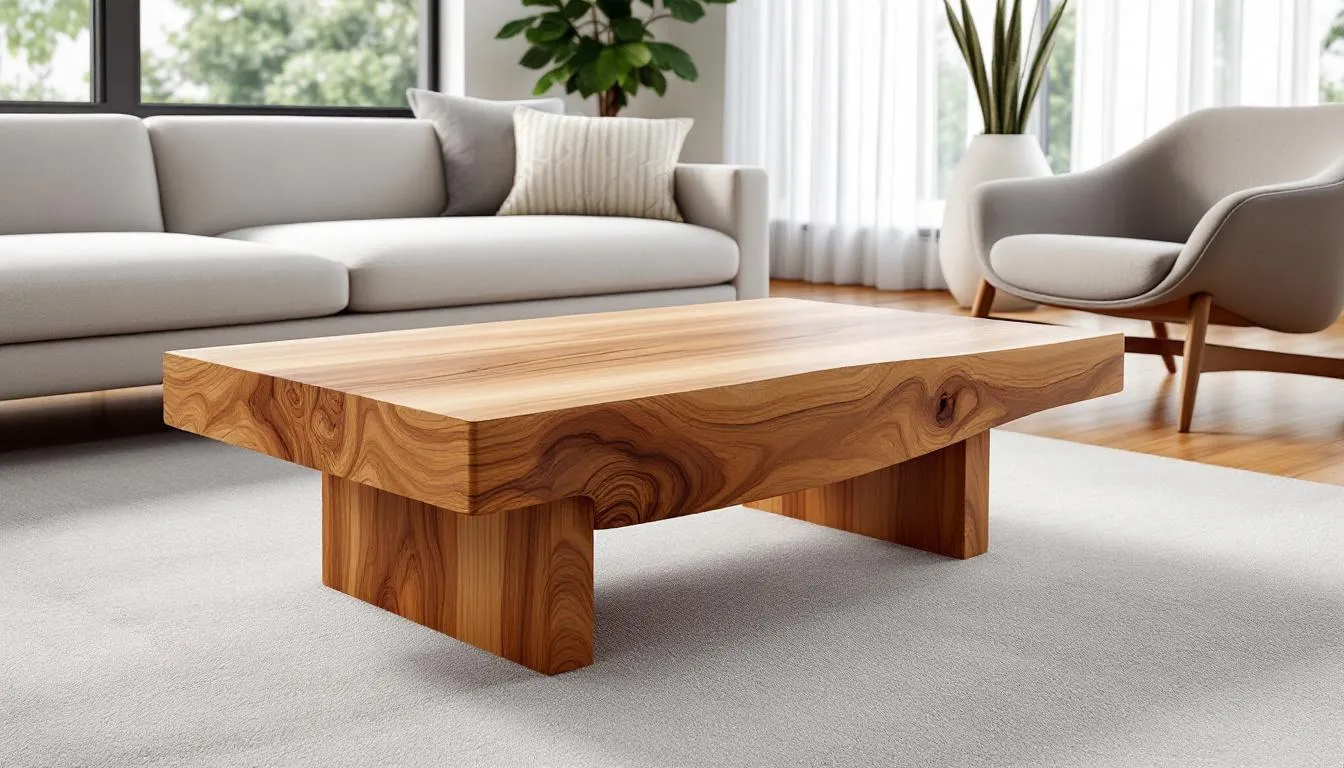
Durability and longevity compared to manufactured materials
When properly cared for, timber coffee tables can last for generations, often increasing in beauty and value over time. Solid wood construction provides exceptional structural integrity that far surpasses manufactured alternatives. While a particle board coffee table might last a few years, a well-crafted timber piece can serve your family for decades, making it a wise long-term investment.
Environmental benefits of choosing sustainable timber furniture
Choosing timber coffee tables supports environmental sustainability by selecting pieces made from responsibly sourced or reclaimed wood. Many manufacturers now offer FSC-certified timber options, ensuring your furniture comes from forests managed with ecological and social responsibility. Reclaimed timber pieces take this concept further by repurposing wood from old buildings, reducing waste while adding historical character to your space.
Investment value and timeless appeal that transcends trends
Unlike trendy furniture pieces that quickly become outdated, timber coffee tables maintain their appeal across changing design movements. Quality wooden coffee tables often appreciate, especially when crafted by skilled artisans or made from premium timber species. This timeless quality ensures your investment will continue to serve both functional and aesthetic purposes, regardless of evolving interior design trends.
Popular Timber Types for Coffee Tables
Understanding different wood species will help you select the perfect timber coffee table for your specific needs, budget, and aesthetic preferences. Each type of timber brings distinct characteristics in terms of durability, appearance, and price point.
Oak coffee tables - strength, grain patterns, and classic appeal
Oak stands as one of the most popular choices for coffee tables due to its exceptional strength and distinctive grain patterns. This hardwood species offers remarkable durability, making it ideal for families with children or high-traffic living areas. Oak's prominent grain creates beautiful visual texture, while its neutral tones complement both traditional and contemporary interior styles. The wood's natural tannins provide built-in resistance to moisture and insects, contributing to its legendary longevity.
Walnut timber - rich chocolate tones and premium finish
Walnut represents the premium end of timber coffee tables, prized for its rich chocolate and caramel tones that deepen beautifully over time. This luxury hardwood displays sophisticated grain patterns with occasional dramatic figuring that creates stunning visual interest. While walnut commands the highest price among common furniture woods, its exceptional beauty and workability make it a favourite among discerning furniture buyers who appreciate fine craftsmanship.
Teak coffee tables - weather resistance and golden hues
Valued initially for its natural weather resistance in shipbuilding, teak brings unique properties to coffee table construction. This tropical hardwood displays warm golden hues that develop a beautiful patina over time. Teak's natural oils provide exceptional moisture resistance, making it an excellent choice for homes in humid climates or for families who frequently use their coffee tables for dining and entertaining.
Pine and recycled timber options for rustic charm
For those seeking rustic appeal or working with tighter budgets, pine and reclaimed timber options offer excellent alternatives. Pine provides a lighter, more casual aesthetic with prominent growth rings and occasional knots that add character. Recycled timber brings environmental benefits while showcasing unique weathering patterns and historical character marks that create conversation-worthy focal points in your living space.
Australian native timbers like jarrah and blackwood
Australia offers exceptional native timber species that combine local provenance with outstanding beauty and durability. Jarrah delivers rich red tones and extraordinary hardness, while blackwood provides elegant grain patterns with golden highlights. These native species support local forestry industries while offering timber coffee tables with a distinctly Australian character.
Comparison table showing durability, price range, and aesthetic qualities
|
Timber Type |
Durability Rating |
Price Range |
Key Aesthetic Features |
Best For |
|---|---|---|---|---|
|
Oak |
Excellent |
$829-$2,500 |
Prominent grain, neutral tones |
Traditional and modern styles |
|
Walnut |
Excellent |
$1,500-$4,000 |
Rich chocolate tones, elegant grain |
Premium, sophisticated spaces |
|
Teak |
Outstanding |
$1,200-$3,500 |
Golden hues, natural weather resistance |
Humid climates, frequent use |
|
Pine |
Good |
$400-$1,200 |
Light tones, rustic character |
Casual, budget-conscious buyers |
|
Jarrah |
Excellent |
$1,000-$2,800 |
Deep red colours, extreme hardness |
Australian-themed interiors |
|
Blackwood |
Excellent |
$900-$2,200 |
Golden highlights, fine grain |
Contemporary Australian design |
Design Styles and Shapes Available
The shape and style of your timber coffee table significantly impact both the functionality and visual appeal of your living space. Understanding the different options helps ensure you select a piece that enhances your room's proportions and supports your lifestyle.
Round timber coffee tables for softer, flowing spaces
Round coffee tables create gentle, flowing lines that soften angular furniture arrangements. These circular designs work particularly well in smaller spaces because they eliminate sharp corners that can impede traffic flow. Round timber coffee tables encourage more intimate conversation arrangements and provide equal access from all seating positions around your sofa or sectional.
Rectangular designs for traditional and modern settings
Rectangular coffee tables remain the most versatile choice, adapting seamlessly to both traditional and contemporary interior styles. These classic proportions work well with standard sofa configurations and provide maximum surface area for functional use. Rectangular designs offer clean, structured lines that complement geometric interior elements while efficiently using available floor space.
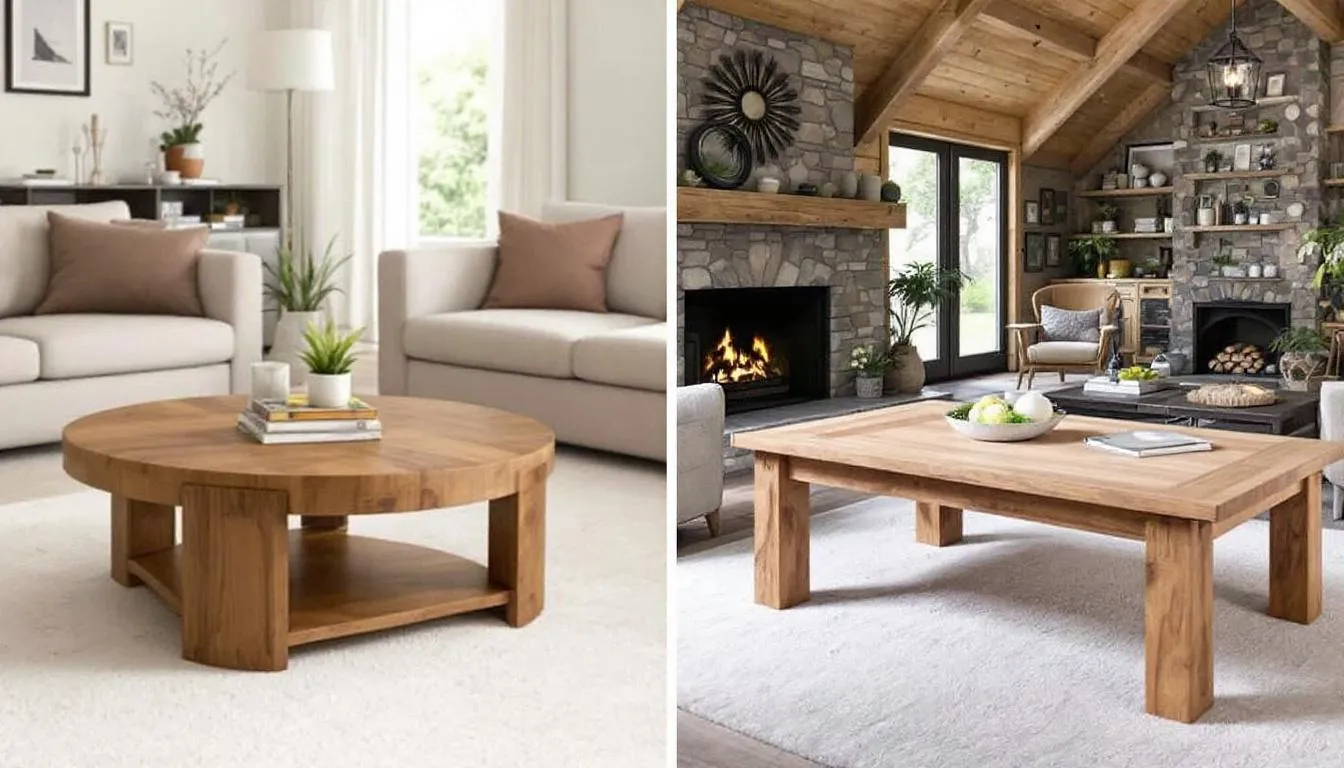
Square coffee tables are perfect for sectional seating arrangements.
Square timber coffee tables excel in spaces with sectional sofas or multiple seating areas arranged around a central point. These designs provide equal access from all sides and create balanced proportions in rooms with symmetrical furniture arrangements. Square tables work particularly well in larger spaces where a rectangular design might appear too elongated.
Oval shapes combining curves with functionality
Oval coffee tables blend the soft appeal of round designs with the practical benefits of rectangular proportions. These elegant shapes provide maximum surface area while maintaining gentle curves that enhance traffic flow. Oval timber coffee tables work exceptionally well in formal living spaces where sophisticated aesthetics take priority.
Live-edge designs showcase natural timber edges.
Live-edge coffee tables celebrate the natural form of the original tree by preserving the organic edge of the timber slab. These dramatic pieces serve as sculptural focal points while maintaining full functionality. Live-edge designs work particularly well in contemporary, rustic, or transitional interiors where natural elements enhance the overall design concept.
Industrial style with metal and timber combinations
Industrial-style coffee tables combine the warmth of timber with the strength and visual interest of metal framework. These hybrid designs often feature thick timber tops supported by steel or iron bases, creating compelling contrasts between organic and manufactured materials. Industrial styles work well in loft apartments, contemporary homes, and spaces with exposed architectural elements.
Modern vs Traditional Timber Coffee Table Designs
Understanding the distinctions between modern and traditional design approaches helps you select a timber coffee table that complements your overall interior style and personal preferences.
Sleek minimalist designs with clean lines and simple construction
Modern timber coffee tables emphasise simplicity, clean lines, and unadorned surfaces, letting the natural beauty of the wood take centre stage. These designs often feature geometric shapes, minimal hardware, and smooth finishes, creating a calm, uncluttered visual appeal. Minimalist approaches work well in contemporary homes where the furniture supports rather than competes with the overall design concept.
Traditional styles featuring ornate details and classic proportions
Traditional timber coffee tables incorporate time-tested design elements like turned legs, decorative aprons, and classical proportions that reference historical furniture styles. These pieces often feature more complex joinery, detailed edge profiles, and finishes that enhance the wood's natural character while adding visual richness to formal living spaces.
Mid-century modern influences with tapered legs and geometric shapes
Mid-century modern coffee tables blend clean, contemporary lines with warm wood tones and distinctive design elements such as tapered legs, geometric shapes, and innovative construction techniques. These designs originated in the 1950s and 1960s but remain popular today for their timeless appeal and ability to bridge traditional and contemporary aesthetics.
Rustic farmhouse styles with distressed finishes and chunky proportions
Rustic and farmhouse-style timber coffee tables emphasise the handcrafted, lived-in appeal through techniques like distressed finishes, chunky proportions, and visible construction details. These designs often incorporate reclaimed wood or new timber treated to appear aged, creating warmth and character that complements casual, family-friendly living spaces.
How to Choose the Right Timber Coffee Table
Selecting the perfect timber coffee table requires careful consideration of multiple factors, including your space dimensions, lifestyle needs, and aesthetic preferences. This systematic approach ensures you choose a piece that enhances both the function and beauty of your living area.
Measuring your space - length should be 2/3 of the sofa length.
Proper proportions are crucial for creating visual harmony in your living space. The ideal coffee table length should measure approximately two-thirds the length of your sofa. For example, if your sofa measures 90 inches long, look for a coffee table about 60 inches long. This proportion creates balanced visual weight while ensuring adequate surface area for practical use.
Height considerations - typically 16-18 inches for standard seating
Standard timber coffee tables measure 16 to 18 inches high and are designed to align comfortably with typical sofa seat heights. This range allows easy access to the table surface while maintaining comfortable sightlines across the room. If your seating is unusually high or low, you can adjust the table height accordingly to maintain proper proportional relationships.
Room proportions and scale matching with existing furniture
Consider your coffee table in the context of your entire room, ensuring it complements rather than overwhelms your existing furniture. In smaller spaces, choose tables with lighter visual weight or open bases that maintain sight lines. Larger rooms can accommodate more substantial designs with chunky proportions or dramatic live-edge features.
Lifestyle factors - families with children vs adult-only spaces
Your family situation significantly impacts the best coffee table choice for your home. Families with young children benefit from rounded corners, durable finishes, and surfaces that can withstand daily use. Adult-only spaces allow for more delicate finishes, glass-topped designs, or antique pieces that require careful handling.
Budget considerations range from $829 to $7,009 based on size and timber type.
Timber coffee tables span a wide price range depending on wood species, construction quality, and design complexity. Entry-level solid wood pieces start around $829, while premium hardwood tables with complex construction or designer pedigree can reach $7,009 or more. Set a realistic budget that accounts for the long-term value of quality construction and timeless design.
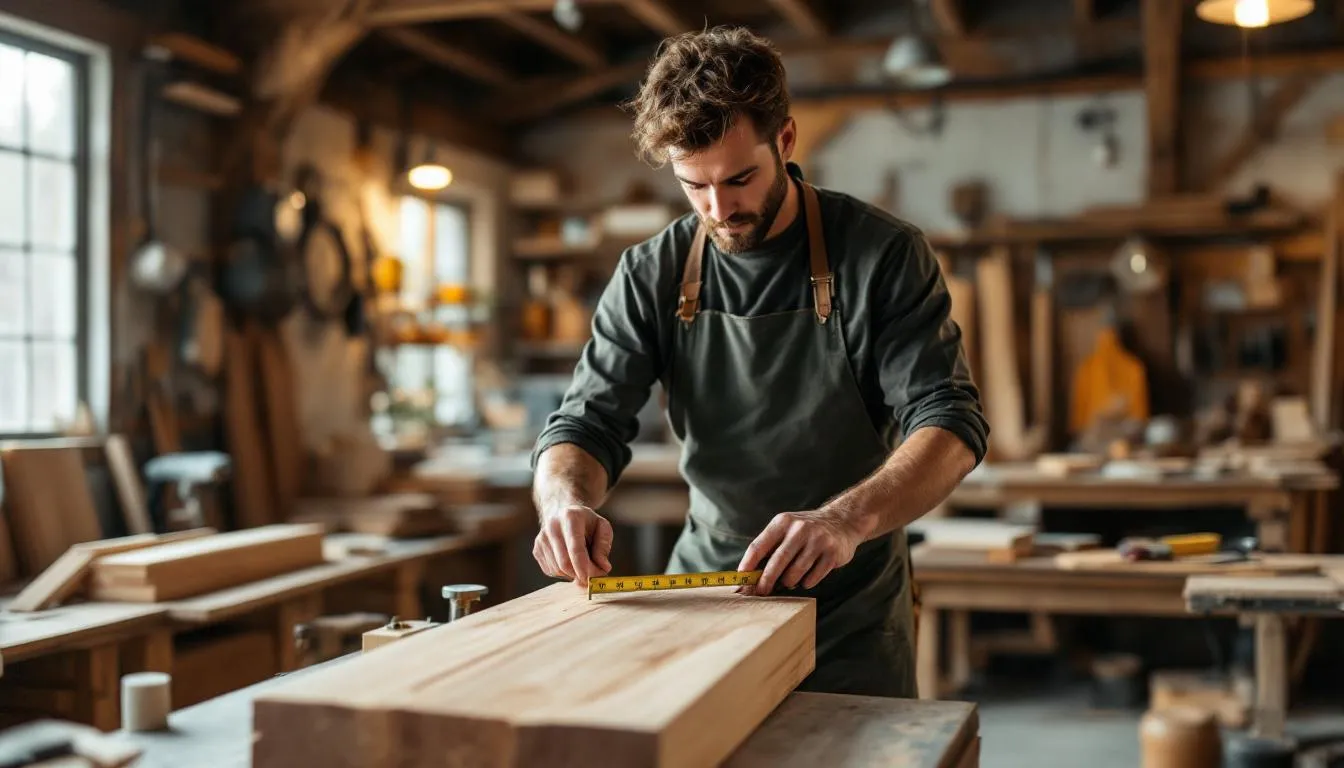
Matching timber tones with existing wooden furniture pieces
Consider how your new coffee table will coordinate with existing wooden furniture in your home. While exact matches aren't necessary, choose timber tones that complement rather than clash with your current pieces. Mixing different wood species can create visual interest while maintaining a unifying element, such as similar grain patterns or finish styles.
Timber Coffee Table Care and Maintenance
Proper care and maintenance protect your investment while preserving the natural beauty of your timber coffee table for years to come. Understanding the specific needs of your wood species and finish type ensures optimal longevity and appearance.
Daily cleaning with microfiber cloths and appropriate wood cleaners
Daily maintenance involves gentle dusting with a clean microfiber cloth to remove surface debris without scratching the finish. Use wood-specific cleaners rather than general household products, as many contain chemicals that can damage timber finishes over time. Always follow the grain direction when cleaning to avoid creating visible streaks or marks.
Protection from heat damage using coasters and placemats
Heat damage represents one of the most common threats to timber coffee tables. Always use coasters under hot beverages and placemats under serving dishes to prevent white rings and permanent heat marks. Even brief contact with hot items can cause irreversible damage to most wood finishes, making prevention far easier than repair.
Humidity control to prevent cracking and warping
Wood naturally expands and contracts with changes in humidity, making environmental control crucial for preventing cracks, warping, or joint separation. Maintain consistent indoor humidity levels between 30% and 50% using humidifiers in dry conditions or dehumidifiers in excessively moist environments. Avoid placing your coffee table near heating vents, fireplaces, or exterior doors where temperature fluctuations are most severe.
Annual oiling and polishing schedules for different timber types
Different timber species and finishes require specific maintenance schedules to preserve their appearance and protection. Oil-finished tables typically need reapplication every 6-12 months, while lacquered surfaces may only require annual polishing. Please consult your manufacturer's recommendations or a furniture care professional to set the best maintenance schedule for your specific piece.
Addressing scratches and minor damage with DIY repair techniques
Minor scratches and surface damage can often be addressed using simple DIY techniques. Light scratches in oil finishes may disappear with gentle reapplication of the appropriate oil, while deeper gouges might require careful sanding and refinishing of the affected area. You can always test repair techniques in an inconspicuous area before applying them to visible surfaces.
Professional restoration options for antique or valuable pieces
Valuable or antique timber coffee tables merit professional restoration when significant damage occurs. Experienced furniture restorers can address complex issues such as structural damage, finish failures, and historical preservation while maintaining the piece's integrity and value. Professional services typically cost more upfront but preserve long-term value better than amateur repair attempts.
Where to Buy Quality Timber Coffee Tables
Finding the right source for your timber coffee table ensures you receive quality construction, fair pricing, and reliable customer service throughout your purchase.
Australian furniture retailers specialising in solid timber pieces
Australia offers numerous furniture retailers specialising in solid timber construction, many of which focus on sustainable, locally sourced materials. These specialised retailers typically provide expert knowledge about wood species, construction techniques, and care requirements. Many also offer customisation options to ensure your coffee table fits your space and style preferences perfectly.
Custom furniture makers offering bespoke sizing and designs
Working with custom furniture makers lets you create a truly unique piece tailored to your requirements. These artisans can accommodate unusual sizing needs, specific wood species requests, or design modifications that aren't available in ready-made options. Custom makers often source premium materials and employ traditional joinery techniques, resulting in heirloom-quality pieces.
Online furniture stores with Australia-wide delivery options
Online retailers offer convenience and often competitive pricing, with many specialising in timber furniture that ships nationwide. Reputable online stores provide detailed product descriptions, multiple photos, and customer reviews that help you make informed decisions. Please make sure the retailer offers comprehensive return policies and customer support to address any issues that arise.
Local craftspeople and artisan furniture makers
Supporting local craftspeople often yields unique pieces while contributing to your local economy. Many regional areas throughout Australia host talented woodworkers who create exceptional timber coffee tables using traditional techniques and local materials. Visiting local workshops allows you to see construction quality firsthand and often results in competitive pricing.
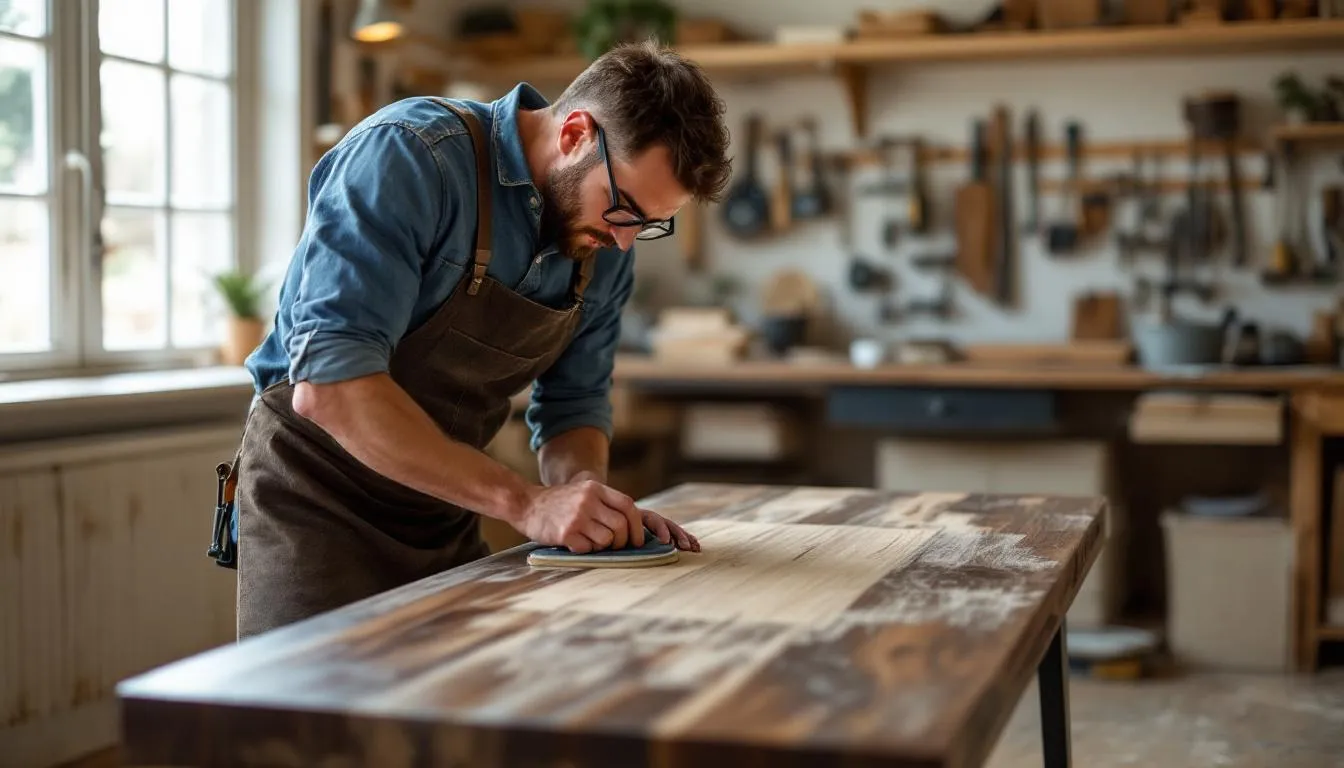
Secure payment options and customer support considerations
Regardless of where you purchase your timber coffee table, please make sure the retailer offers secure payment processing and comprehensive customer support. Please be sure to look for businesses that provide detailed warranty information, care instructions, and ongoing support for any questions or concerns. Reputable retailers typically offer multiple payment options and clearly outlined policies for returns, exchanges, and repairs.
Delivery timeframes for custom pieces are typically 4-8 weeks.
Please plan when ordering timber coffee tables, especially custom pieces that require 4-8 weeks for completion and delivery. Ready-made options often ship within 1-2 weeks, while bespoke designs require additional time for construction, finishing, and quality control. You can factor delivery timeframes into your room design timeline to ensure everything is ready when needed.
Bespoke vs Ready-Made Options
Understanding the advantages and considerations of custom versus ready-made timber coffee tables helps you make the best choice for your specific situation and requirements.
Custom sizing benefits for unique room layouts and specific dimensions
Bespoke timber coffee tables excel when your space has unusual proportions or specific functional requirements that standard sizes can't accommodate. Custom makers can create tables that flawlessly fit between existing furniture pieces, work around architectural features, or incorporate specific storage requirements. This precision ensures optimal functionality and visual harmony within your unique space.
Timber selection choices when ordering bespoke furniture
Custom furniture orders typically offer extensive options for timber species beyond what's available in ready-made pieces. You can select specific grain patterns and wood figures, or request matching timber from the same tree for multiple furniture pieces. This level of selection ensures your coffee table perfectly complements your aesthetic vision and existing décor.
Lead times and pricing differences between custom and ready-made tables
Ready-made timber coffee tables offer immediate availability and typically cost less than custom alternatives due to production efficiencies. However, bespoke pieces command premium prices that reflect personalised design, premium materials, and skilled craftsmanship. Would the additional time and cost investment align with your priorities for uniqueness, perfect sizing, and long-term satisfaction?
Design consultation process for creating one-of-a-kind pieces
Working with custom furniture makers typically begins with a design consultation where you discuss your vision, requirements, and budget. This collaborative process allows you to explore design options, review material samples, and refine details before construction begins. Many makers provide sketches or 3D renderings to ensure you're delighted with the design before proceeding.
The consultation process also provides opportunities to learn about different construction techniques, finishing options, and care requirements specific to your chosen materials and design. This education helps you make informed decisions and properly maintain your investment once it's completed.
Conclusion
Investing in a quality timber coffee table represents far more than simply purchasing furniture – you're acquiring a centrepiece that will serve your family for generations while adding natural beauty and warmth to your living space. The unique character of timber — from the distinctive grain patterns of oak to the rich chocolate tones of walnut — ensures your coffee table will be a conversation piece that reflects your appreciation for natural materials and fine craftsmanship.
Throughout this guide, we've explored the essential considerations for selecting the perfect timber coffee table, from understanding different wood species and their characteristics to choosing the right size and style for your space. Whether you opt for a ready-made piece or commission a bespoke design, the key lies in selecting quality construction and sustainable materials that align with your lifestyle and aesthetic preferences.
The beauty of timber coffee tables extends beyond their immediate visual appeal. These pieces age gracefully, developing character and patina over time while maintaining their structural integrity. With proper care and maintenance, your timber coffee table will likely outlast multiple furniture updates, making it a wise investment that provides both functional value and enduring beauty.
Take the time to visit showrooms, explore different timber options, and consider working with local craftspeople who can help you discover the perfect piece for your home. Your timber coffee table will become the heart of your living space, supporting countless family gatherings, quiet coffee moments, and everyday life activities while showcasing the timeless appeal of natural wood craftsmanship.


